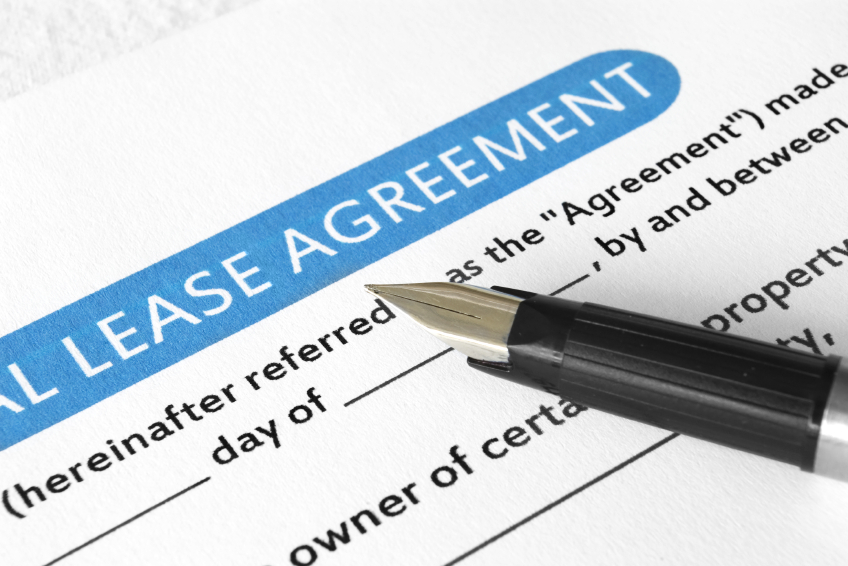
Are you a landlord or tenant of a commercial lease?
Do you want to terminate a commercial letting agreement?
Or perhaps you want to lawfully lay claim to a new lease?
This piece aims to give you a good handle on what’s involved.
Termination of a Commercial Letting Agreement
The most common ways to terminate or end a commercial ease are
1) Notice to quit
2) Forfeiture.
Since the Residential Tenancies Act, 2004 lays down the procedure for the vast majority of residential tenancies Notice to Quit and Forfeiture now only apply to commercial tenancies.
You only use a Notice to Quit procedure where the tenant remains in possession after the expiry of the agreed term and continues to pay rent. This tenant is said to be overholding.
Where the landlord wishes to end the tenancy prior to the end of the agreed term, the appropriate procedure is Forfeiture.
Notice to Quit
Notice to quit is the most common procedure to recover the premises where the tenant is overholding, that is the term of the lease has ended.
Anybody who has received prior express authorisation may serve the notice to quit.
Where the landlord is not serving the notice to quit himself it is prudent to arrange prior written authority to be given to the server. This authority can not be given retrospectively.
There is no set form for the notice to quit but it must contain a clear and unambiguous intention to end the tenancy.
A description of the premises must be given and it must be addressed to ‘the tenant and all other persons in occupation’.
It need not be signed but it is prudent to do so.
Length of Notice
Firstly check the written agreement to see is there an agreed procedure. If not the statutory minimum is 4 weeks and the notice must end on a gale day(this is the point when one period ends and another begins).
The crucial question is how is the rent reserved in the lease (this is not the same as how is the rent paid).
A monthly tenancy requires one month’s notice expiring on a gale day.
A quarterly tenancy requires 3 months notice and this should expire on a gale day.
A tenancy from year to year requires 183 days notice expiring on the anniversary of the tenancy.
Personal service is best and in the case of a limited company on the registered office of the company.
Waiver of notice
You will be deemed to have waived the notice to quit if you
- Serve another notice
- Demand the rent
- Accept the rent which falls due after the end of the notice period.
Landlords are advised therefore not to accept rent after the end of the notice to quit has expired.
Care should be taken to check the lease to see if any provision has been made for a specific method of terminating the tenancy.
Forfeiture
This is only appropriate where the term of the lease is still running. But a landlord has no right to terminate a lease prematurely unless the tenant has been in breach of one or more of it’s terms.
A landlord also loses the right to forfeiture if he does not follow certain statutory procedures which give the tenant a reasonable opportunity to remedy any breach.
It is extremely difficult in practice to forfeit a lease, especially if the parties are in court for the first time.
Grounds for forfeiture
The 3 main grounds for forfeiture are
1) Disclaimer by the tenant of the landlord’s title;
2) Re-entry or ejectment where there has been a breach of a condition in the lease;
3) Re-entry or ejectment where there has been a breach of a covenant which provides for re-entry for that breach.
Breach of condition of lease
Breach of a condition of a lease gives the landlord an inherent right to re-enter.
But the landlord must be careful to distinguish between a condition and a covenant.
Breach of covenant in a lease
A breach of covenant in a lease will only give rise to a right to re-enter if the covenant broken also has a proviso for re-entry in the lease.
Before forfeiture can take place a ‘section 14’ notice must be served unless forfeiture is occurring for non payment of rent. In this case there is strictly no need for a ‘section 14’ notice, but it is probably advisable to serve one.
This notice calls upon the tenant to remedy the breach within a reasonable time.
Peaceable re-entry
If the notice is served and the time specified in the notice has elapsed without the remedy of the breach, a demand is again made for possession and the landlord may re-enter if it can be done without the use of force. There is a statutory prohibition on the use of force.
If peaceable re-entry is carried out, and this is difficult, the landlord should make a detailed inventory of property, possessions/stock on the premises and write to the tenant telling him how he can retrieve them, and what will happen if he doesn’t.
Ejectment civil bill on title
If the landlord can not re-enter peaceably the landlord’s remedy is to issue an ejectment civil bill and seek an order for possession in court. If re-entry cannot be carried out peaceably the landlord cannot use force.
Relief against forfeiture
There are 2 reliefs for the tenant to prevent forfeiture of the lease-statutory and equitable.
Statutory
Section 14(2) Conveyancing Act 1881 allows the tenant to apply to court for relief-it is then at the discretion of the court and there are no fixed rules for the court in exercising its discretion.(Much of the Conveyance Act, 1881 has been repealed by the LAND AND CONVEYANCING LAW REFORM ACT 2009 but this relief has not been repealed).
A sub-lessee will get statutory relief and his sub-lease will continue as if the superior landlord was the immediate lessor.
The Landlord and Tenant(Ground Rents) Act 1978 provides that forfeiture can not occur by reason of failure to pay ground rent in the case of a house where the tenant is entitled to buy out the freehold.
In general there is no statutory relief where the landlord forfeits the lease for non-payment of rent.
Equitable
Courts may use its equitable discretion to grant relief to the tenant, even for non-payment of rent, if it would appear to be just to do so.
Courts lean against forfeiture for non payment of rent and tend to give tenant’s plenty of opportunity to pay up. But it will look at the conduct of the parties prior to going to court.
Other Forms of Termination
The list below is not exhaustive:
Effluxion of time
Where the term of a lease is up there is no need to serve a notice. A letter prior prior to the end of term pointing up the end of the term and demanding possession will suffice.
Merger
A lease may end when the interest of the landlord and tenant become vested in the one person in the same right.
Court Order
The court has jurisdiction under certain legislation to terminate a tenancy.
Exercise of an option (break clauses) in a lease
Commercial leases often have break clauses entitling either party to terminate prematurely.
Legal proceedings
It may still prove necessary to go to court,even after ending the lease by one of the methods outlined above.
Ejectment Civil Bill on Title Based on Forfeiture
The landlord’s claim is based on the fact that the tenancy has ended by forfeiture and the tenant has no right to retain possession. This is a very common procedure, especially where non-payment of rent has occurred.
The landlord may need to go to court a number of times to establish a poor track record of the tenant as the court is very reluctant to grant possession first time for non payment of rent.
Ejectment for non payment of rent
This is based on Deasy’s Act,1860. The huge disadvantage is that the landlord must wait until one years rent is due-not very popular method for this reason.
Ejectment Civil Bill for overholding
This is used following service of a notice to quit or where the original lease has ended and the tenant remains in possession.
From the tenant’s perspective under the Landlord and Tenant Act 1980 he must now serve notice to seek relief, that is to seek a renewal of the lease) within a certain period following service of the notice to quit.
The Entitlement to a New Commercial Lease
The Landlord and Tenant Act 1980 which was amended by Landlord and Tenant Act 1994 provide statutory entitlements to tenants in a landlord/tenant relationship.
The reliefs apply where the property that is the subject of the agreement is a tenement which is a legal description but has been interpreted fairly generously. It includes buildings which are not permanent and can include sheds erected without planning permission.
To qualify for the statutory entitlements the main purpose/use must attach to the buildings. If there is land involved then the land must be subsidiary and ancillary to the main use of the buildings.
Section 16 of Landlord and Tenant Act 1980 provides that a tenant will be entitled to a new tenancy at the expiry of his existing lease if he can prove one of the following equities
* Business equity-if the tenant was in occupation for 5 years continously and was using the premises/tenement for business purposes (this period used to be 3 years); temporary breaks can be disregarded by the courts. The five year period only applies to tenancies/leases which commence after 10 August 1994 and the tenant must occupy the tenement for the entire period
* Long possession equity-this applies to both residential and business property and states that if the person was in occupation for 20 years then he/she was entitled to a new lease
* Improvements equity-this also applies to both residential and commercial property and states that if the tenant would be entitled to compensation for improvements and they accounted for half or more than half of the letting value of the tenement when the notice of intention to claim statutory relief, then the tenant has an improvements equity
Terms of a new tenancy
These terms are to be agreed between landlord and tenant and failing that will be fixed by the court. If the tenant is entitled to a new lease based on business equity the new term shall be fixed at 20 years or such time as the tenant may nominate, provided it is over 5 years.
If the right to a new tenancy is based on long possession or improvements the term of the new tenancy will be 35 years or a lesser term that the tenant can nominate.
Rent
This will be fixed by the court at open market value if the landlord and tenant can not agree on a new rent.
Restrictions on a right to a new tenancy
Section 85 of the act prevented any provision contracting out of the Act. However this was changed re the tenant of an office premises who could contract out of his right if he took independent legal advice and signed a renunciation under sect 4of his right and this had to be done before the commencement of the tenancy.
Other restrictions include the situation where the tenant is in breach of the lease in respect of payment of rent.
Furthermore where the landlord intends to pull the building down in order to redevelop the building/site then he can refuse to grant a new tenancy.
However if this occurs and the tenant would have been entitled to a new tenancy otherwise, then the tenant is entitled to disturbance compensation which is a right of both residential and commercial tenants.
How to claim a new tenancy
The forms required are set out in Landlord and Tenant Regulations, 1980. This notice must be served before the end of the tenancy or within 3 months of the end. (The courts have discretion to extend these time limits in limited circumstances).
Compensation for improvements
This is available to both residential and business premises. Where a tenant quits a tenement because of the termination of the tenancy he is entitled to be paid compensation for every improvement by him or any predecessors in title which adds to the letting value of the premises.
However he will not be entitled to compensation if he has surrendered the lease or the termination is for non-payment of rent.
Improvement notice
Where a tenant proposes to make improvements to the tenement he may serve an improvement notice on his landlord.
If the latter ignores it then the tenant can go ahead with the works and is entitled to compensation. However the landlord can then himself serve an improvement undertaking notice on the tenant and execute the works himself.
Or he can object to the improvement notice and the tenant can then withdraw his notice or apply to court which can allow the tenant to make the improvement or reject his claim based on the fact that he has not been in occupation for 5 years and is consequently not entitled to a new lease.
Any covenants in the lease which prohibit the selling of the building or the change of use of the building will be interpreted as only prohibiting this to occur without the landlord’s consent, and this consent must not be unreasonably withheld.
A similar interpretation will apply to any covenant in the lease prohibiting the making of improvements.
Update
The Civil Law Act 2008 has made some changes to Landlord and Tenant legislation. Previously only the occupier of an office lease could contract out of his right to a new lease as outlined above.
The Civil Law Act 2008 now allows any business user to renounce his right and furthermore allows him to renounce not just prior to the commencement of the lease but at any time. He must still receive independent legal advice.









